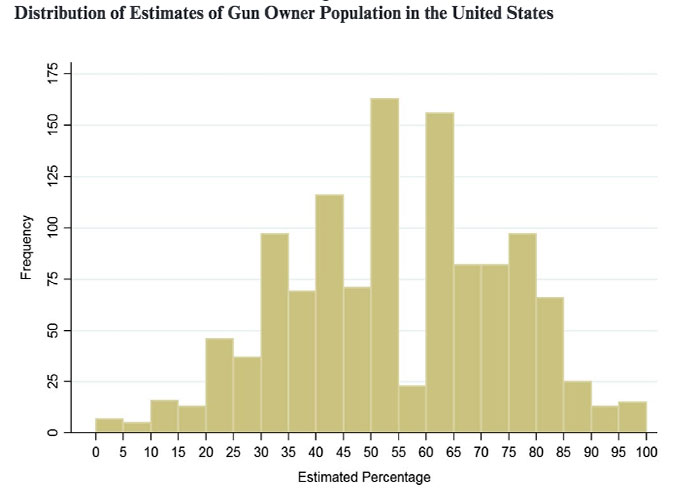Study: Most people overestimate total number of US gun owners

LAWRENCE — Most people vastly overestimate the population of gun owners in the United States, and it potentially influences how groups approach gun policies, according to a study by two University of Kansas political scientists.

"Because gun owners are actually a minority, perceiving their group as larger and even as a majority could make them feel more empowered to advocate on gun issues," said Don Haider-Markel, professor and chair of the Department of Political Science. "Likewise, non-gun owners that perceive a larger gun owner population now and in the future might be less likely to advocate for gun regulations."
Mark Joslyn, professor of political science, and Haider-Markel are co-authors of the study, recently published in the journal Politics & Policy. They examined results from a 2016 nationally representative survey of 1,290 American adults who answered questions on a variety of policy, election-specific, psychological and political questions, including a number on gun ownership and regulation.

Specifically, the survey asked people to give their "best guess" on what percentage of Americans owned firearms. The actual percentage of U.S. individual gun owners is roughly 25 percent, and about 33-40 percent of U.S. households have at least one gun in the home, the researchers said.
However, the researchers found that more than 75 percent of respondents overestimated the number, and only a small minority, 2.3 percent, underestimated the number of gun owners.
The most common estimate was 50 percent, and nearly one-fifth of respondents estimated the gun owner population was 70 percent or higher.
"Generally speaking, less knowledgeable people tend to overestimate the size of groups, but so, too, do people who belong to the group, have contact with the group or have positive affinity towards the group," Haider-Markel said. "In short, we inflate the size of groups we belong to or are close to."
The overestimation of the population among both gun owners and non-gun owners could provide some explanation for the level of support surrounding pro-gun policies or the lack of support for federal gun control measures, even in wake of high-profile mass shootings, such as Newtown, Connecticut; Las Vegas; and Orlando and Parkland, Florida, though the professors said future research would likely examine potential trends after more recent advocacy efforts by gun violence victims.
"We see this as another in a line of politicized issues where facts are contested and factual beliefs might influence policy attitudes on the issue. As such, we wanted to explore basic knowledge about gun owners, perceptions of future gun ownership, and determine whether these perceptions influenced gun attitudes," Haider-Markel said.
He added that past research in this area is built around the notion of a perceived threat of a group, but rarely is that threat actually assessed.
The researchers have conducted similar research on how people overestimate the gay and lesbian population in the United States.
"As with the earlier study, people are not very good at estimating the size of groups, and this has implications for their policy preferences," Haider-Markel said. "Here we can also show that people tend to think that the gun owner population will grow in the future even though all indications are that the gun owner population is getting smaller."